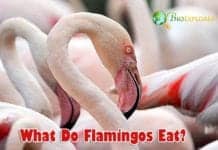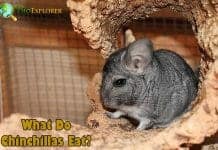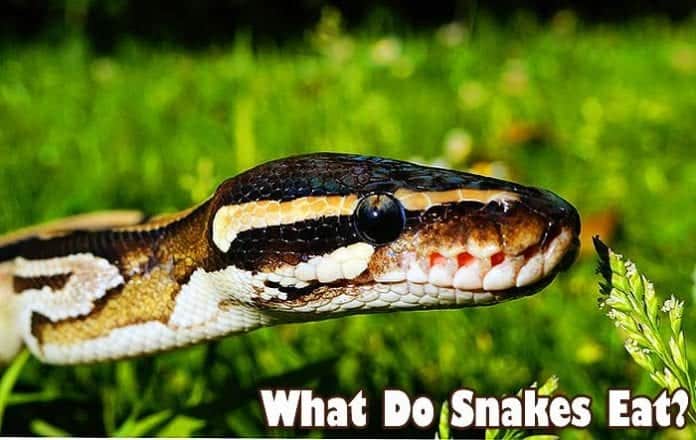
Scientists have described over 3,000 species of snakes. These reptiles can be found almost everywhere except for Ireland, Iceland, Greenland, New Zealand, and Antarctica.
Out of the species that have been identified, 600 are known to be venomous.
Snakes are strict carnivores. Their diet constitutes of rodents, eggs, lizards, fish (Koi fish), frogs, insects, chameleons, weasels, groundhogs, and other small mammals such as bare-eared squirrel monkeys.
Table of Contents
What do Snakes Eat?
| Brahminy Blind Snake | Termites, ants, larvae, small beetles, and small earthworms. |
| Western Threadsnake | Ants, termites, spiders, centipedes, and other small insects. |
| Burmese Python | Birds, small mammals (such as Chinchillas), and rodents. |
| Red-tailed Pipe Snake | Small snakes, eels, and frogs. |
| Western Diamondback Rattlesnake | Birds, small mammals, amphibians, fishes, other reptiles, and invertebrates. |
| Black Mamba | Birds, rodents, and squirrels. |
![]()
Snakes Diet by Types
All snakes are classified under the suborder Serpentes. The suborder Serpentes is further broken down to 2 infraorders, which are Alethinophidia and Scolecophidia.
- The division between the infraorders is based on differences in morphology and the sequence of mitochondria DNA.
- The infraorder Scolecophidia contains snakes which are blind. Thread snakes are also considered under this infraorder.
- The infraorder Alethinophidia constitutes advanced species.
- A majority of snakes are classified in the infraorder Alethinophidia.
- These identified infraorders will be used to understand the different types of snakes that exist, especially when looking at notable examples under each category.
![]()
Infraorder Scolecophidia
What Do Brahminy Blind Snakes Eat?
| Animalia | Squamata | Typhlopidae | Ramphotyphlops | Ramphotyphlops braminus |
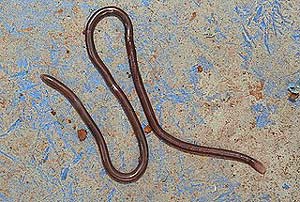 Brahminy Blind Snake’s diet includes termites, ants, larvae, small beetles, and small earthworms.
Brahminy Blind Snake’s diet includes termites, ants, larvae, small beetles, and small earthworms.
- The Brahminy blind snake is also referred to as the flowerpot snake.
- This snake inhabits agricultural and urban areas.
![]()
What Do Western Threadsnakes Eat?
| Animalia | Squamata | Leptotyphlopidae | Leptotyphlops | Leptotyphlops humilis |
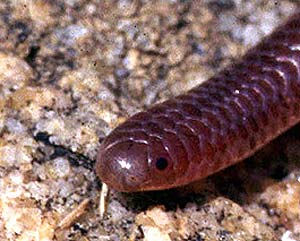 Western Threadsnake forages underground to find its food, which mainly constitutes ants, termites, spiders, centipedes, and other small insects.
Western Threadsnake forages underground to find its food, which mainly constitutes ants, termites, spiders, centipedes, and other small insects.
- This type of snake almost resembles a shiny earthworm thanks to its being small and thin.
- It inhabits desert scrubs, semidesert grasslands, lower woodlands, below mountainous terrains, low valleys, and canyon bottoms.
![]()
Infraorder Alethinophidia
What Do Burmese Pythons Eat?
| Animalia | Squamata | Pythonidae | Python | Python bivittatus |
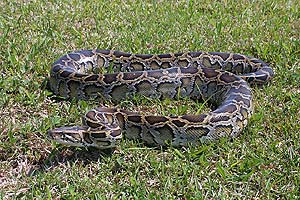 Burmese Python feeds on a diet that constitutes of birds, small mammals, and rodents.
Burmese Python feeds on a diet that constitutes of birds, small mammals, and rodents.
- This type of snakes has skins that are beautifully patterned.
- Burmese pythons are notable for their rapid growth rates.
- The Burmese python is native to Asia, especially the southern and southeastern parts.
- The snake inhabits grasslands, swamps, and jungles.
![]()
What Do Red-tailed Pipe Snakes Eat?
| Animalia | Squamata | Cylindrophiidae | Cylindrophis | Cylindrophis ruffus |
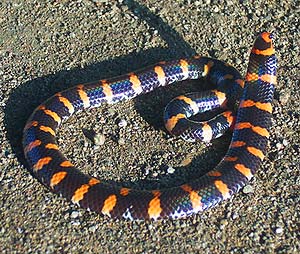 Red-tailed Pipe Snake’s diet mainly comprises of small snakes, eels, and frogs.
Red-tailed Pipe Snake’s diet mainly comprises of small snakes, eels, and frogs.
- This type of snake is non-venomous meaning it is not dangerous to humans.
- The red-tailed pipe snake mostly inhabits moist forests, as well as agricultural soils.
![]()
What Do Western Diamondback Rattlesnakes Eat?
| Animalia | Squamata | Viperidae | Crotalus | Crotalus atrox |
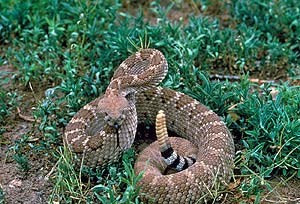 Western Diamondback Rattlesnake’s diet comprises of birds, small mammals, amphibians, fishes, other reptiles, and invertebrates.
Western Diamondback Rattlesnake’s diet comprises of birds, small mammals, amphibians, fishes, other reptiles, and invertebrates.
- This snake inhabits deserts and Savannah/grasslands.
- It is commonly found in dry, rocky and shrub terrains, especially in western and central Texas, all the way to South California and New Mexico.
![]()
What Do Black Mambas Eat?
| Animalia | Squamata | Elapidae | Dendroaspis | Dendroaspis polylepis |
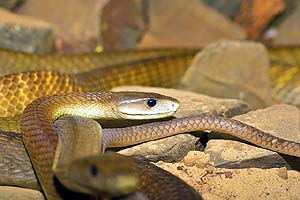 Black Mamba’s diet consists of birds and small mammals like rodents and squirrels.
Black Mamba’s diet consists of birds and small mammals like rodents and squirrels.
- This snake is commonly found in riverine forests, rocky hills, and wooded savannah regions.
![]()
How do Snakes Hunt?
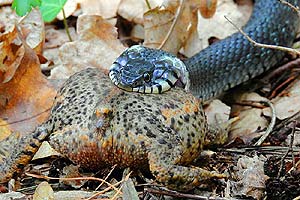 For snakes, hunting is facilitated by their fork tongues, which they use to detect prey.
For snakes, hunting is facilitated by their fork tongues, which they use to detect prey.
- They can also detect prey with the help of their pit holes located in front of their eyes and the bones of their lower jaws, which aid in the detection of vibrations from prey.
- The hunting strategies they use may involve ambushing prey upon detecting it.
- Some snakes use camouflage to remain unnoticed by their prey, and then they emerge at last minute to capture their prey.
- Other snakes lure their prey using their tails and then sneak upon them.
- Another strategy snakes use requires the application of force, where they jump onto their victims and proceed to crush and consume them.
![]()
When do Snakes Eat?
Most snakes are not particularly diurnal or nocturnal.
- They come out when they wish and will tend to eat at their desired time.
- However, other species like the rattlesnakes are strictly nocturnal and will tend to eat at night.
![]()
How often do Snakes Eat?
Snakes do not eat as often.
- They can eat once a week or every two weeks, while others can go longer.
- Younger snakes eat more often (twice a week) compared to older ones.
![]()
What eats Snakes?
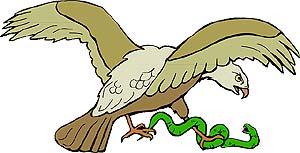 Snakes have numerous predators.
Snakes have numerous predators.
- Some notable natural enemies include wild boars, birds of prey, coyotes, foxes, raccoons, and other snakes.
![]()
Where do Snakes fit in the Animal Food Chain?
Snakes have an instrumental role in the animal food chain. They act as predators and prey and thus help maintain the integrity of a healthy ecosystem.
![]()
Cite This Page
Key References
- “Snakes, facts and information”. Accessed July 28, 2019. Link.
- “Serpentes – an overview | ScienceDirect Topics”. Accessed July 28, 2019. Link.
- “Snake Facts & Types of Snakes”. Accessed July 28, 2019. Link.
- “Risk Assessments For Exotic Reptiles and Amphibians Introduced To Australia – Flowerpot Snake (Ramphotyphlops braminus) Daudin, 1803” – Government of Western Australia. Accessed July 28, 2019. Link.
- “Indotyphlops braminus :: Florida Museum of Natural History”. Accessed July 28, 2019. Link.
- “Western Threadsnake (Leptotyphlops humilis) – Reptiles of Arizona”. Accessed July 28, 2019. Link.
- “Burmese Python Habitat, Diet & Reproduction – Sydney”. Accessed July 28, 2019. Link.
- “Reptile of Hong Kong”. Accessed July 28, 2019. Link.
- “Red Tailed Pipe Snake – Non Venomous – Not Dangerous | ThailandSnakes”. Accessed July 28, 2019. Link.
- “ADW: Crotalus atrox: INFORMATION”. Accessed July 28, 2019. Link.
- “ADW: Dendroaspis polylepis: INFORMATION”. Accessed July 28, 2019. Link.
- “How do snakes hunt?”. Accessed July 28, 2019. Link.
- “Snakes: The nocturnal hunter”. Accessed July 28, 2019. Link.
- “Snake Predators – Snake Facts and Information”. Accessed July 28, 2019. Link.
- “The role of snakes in our environment | Highway Mail”. Accessed July 28, 2019. Link.



